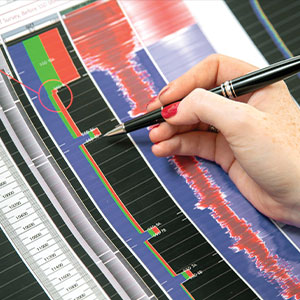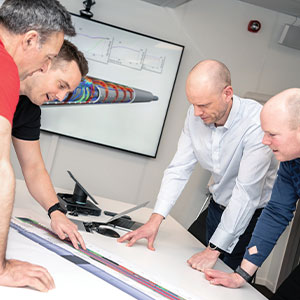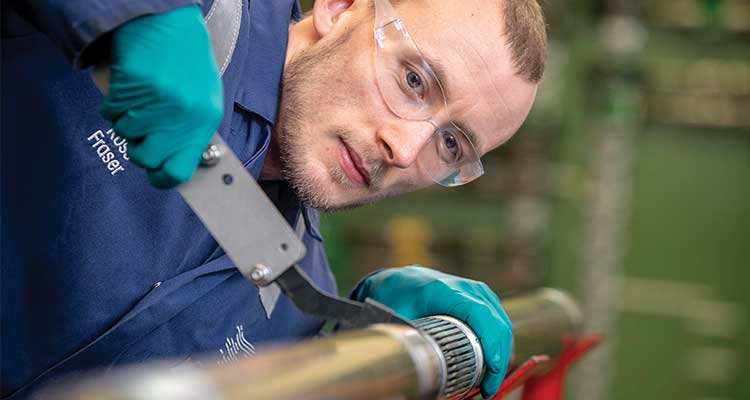Technology and merger spark synergistic push forward for HydraWell
From the dawn of its corporate journey in 2009 with the development of PWC® – Perf-Wash-Cement to reduce the costs associated with section milling for wellbore barrier placement, HydraWell’s story is punctuated with landmarks which have sealed the company’s reputation as a sector leader.
Along with the development of PWC®, additional tools have come to life such as HydraHemera™ which launched in 2014 improving operational performance, reducing overall durations, and extending application to include partially cemented annuli, and HydraTyphon™, which again extended the application to encompass larger casings. HydraCT™ launched in 2022 to provide operators with the option to run on coil tubing, potentially eliminating the need for a rig. The business is currently rolling out an internal restructure to challenge its team and broaden its horizons even further.
We hear from Tom Leeson, Chief Technology Officer at HydraWell; Alan Quirke, Chief Operating Officer; Bruce Melvin, Managing Director at READ, and Maurillio Addario, Data Analytics & Software Engineering Director at ANSA about how the remodeling is set to uplevel the company’s stalwart reputation for leading technology and innovation.

“After coming together last year, we’re in the early stages of an exciting new phase in our corporate journey, having redesigned our organization structure and model to focus on consolidation, integration and standardization,” begins Alan. “By embracing our synergies, the innovative model we have adopted gives us an ability to offer end-to-end well abandonment assurance to our clients through an integrated, one-stop service offering. This draws on collective experience of more than 40 years and continues to put our client base at the heart of the crossover benefits of an expanded portfolio of operations.
“The unique combination of an industry-leading cased hole analyst team, state-of-the-art downhole tool fleet, innovative barrier remediation and placement technologies delivered via a digital platform through a cost-effective service model presents solutions that our customers have confidence in – and the feedback we’ve received from them so far reinforces that,” he shares.
New-look organization
A cornerstone of operational success throughout the last 14 years, the company is widely known for delivering PWC® annular remediation by utilizing fluid hydraulics to achieve the necessary fluid exchange in the annulus. Alan continues: “We provide assurance of the results by creating a digital twin using a combination of results validated with CBL/USIT logs and CFD to model, predict, and optimize the impact of operating parameters – flowrate, viscosity, densities, perforation size and distribution.”
From this solid technological base, recent ventures have pushed HydraWell to new heights and in 2022, the business joined forces with READ (including subsidiaries READ Cased Hole and ANSA) to create a leading well integrity specialist which is rapidly realizing its ambitions to play a prominent role in late life oilfield activities.
Historically, READ and ANSA may have come from the same rootstock, but their methods and areas of expertise were quite different – and that’s something the new-look organization is capitalizing on as it takes a turnkey ideology to market. Bruce Melvin explains: “ANSA has always been primarily a digital company for example, whereas READ was and still is very much grounded in the three dimensional world, where electromechanical probes are used to measure events as they happen. ANSA’s work happens exclusively in the digital space, manipulating the digital files generated by READ’s probes. As such, we never have to contend with the complexities of how to get the data in the first place. That’s all down to READ’s ability to navigate complex logistical challenges. The operation sends tools and personnel around the world, often under dangerous and demanding conditions, which brings its own set of probe maintenance and reliability demands only very few companies can cope with and none as well as READ.”
He adds: “Essentially, READ acquires the data downhole to identify issues such as casing corrosion, scale build, damage, leaks and cement bonding. This data is then transferred from the downhole tool to ANSA who analyzes the data to produce a solution.”
The ideal partner
Reflecting on the success of the transition to date, Maurillio Addario says: “So far, the transition has been very smooth, with the critical step of assigning the right people to the right jobs taking place quickly and methodically,” he begins. “The merger unlocks huge potential for all three companies. As we are now a combined entity, we can address the entire gamut of scenarios typically associated with P&A activities.”
“The data collection capabilities brought in by READ, and ANSA’s fast, accurate diagnostic of downhole conditions, combined with HydraWell’s expertise means we are now uniquely positioned to provide effective solutions for the issues identified,” Bruce adds.

Post-merger, additional opportunities in previously untapped geographies have also been unlocked. HydraWell has now signed its first MSA involving all three product lines, in Australia. According to Tom, “growth has come from international expansion beyond the ‘local’ market of Norway/UK in line with increasing decom activity in other markets. The Netherlands, Alaska, Australia, and Brazil have been at the forefront recently, with assurance of barrier verification key to acceptance in these new areas.”
READ has experienced growth through working alongside other service companies, large and small. The reason being that large companies may no longer be focusing on some traditional services and CapEx is being spent elsewhere. “In terms of smaller service companies, barriers to entry, such as the cost of equipment and perhaps insufficient expertise, mean that READ is positioned as the ideal partner to enhance their service offering; a strategy that has been adopted globally,” Bruce adds.
Well assurance specialists
Turning towards sustainability, Bruce emphasizes that responsibility towards the environment is woven into the company’s corporate DNA. He says: “Our combined service offering is completely focused on sealing wells permanently and eliminating fugitive emissions after decommissioning. During the process, the technology used helps to conserve energy by reducing the time spent on operations to install barriers and minimizing waste through the avoidance of excessive steel removal from the wellbore.”
In addition to reducing the direct environmental impact of well decommissioning, the company has developed leading processes, and is implementing procedures to support remote management of its operations at the customer site, reducing travel and, consequently, carbon emissions while still maintaining active and exemplary levels of customer support.
Looking ahead to the next five years, HydraWell will continue to lead the way in well assurance information review and data acquisition, data analysis and activity recommendation, and barrier remediation and installation. “We want the business to be recognized as the ‘go-to’ organization for embedded digital workflows where the installation of wellbore barriers can be assured. Verification of the final installed barrier will be guaranteed post-operation through a process where multiple data parameters are recorded and verified as being compliant with the digital design requirements,” explains Alan.
The team is also poised to focus on investments in the technology which will remain central to HydraWell’s technology journey – and by coming together with READ and ANSA, the door will open to even greater developments. Alan says: “We are working in collaboration with academia to develop machine learning and artificial intelligence capability aimed at harvesting the vast repositories of available data storage. We hope this will reduce time connected with decreasing risk and improving customer confidence in their decision-making processes. These factors place us at the forefront of creating a more efficient and safer future for the wider industry.”
Bruce concludes: “We have become well assurance specialists and will continue to grow our offering to the market through tech development, inorganic growth and business partnerships.”
